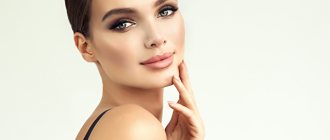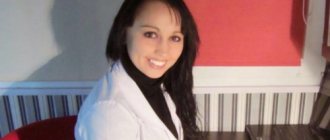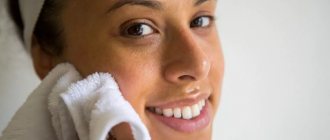If you are concerned about facial asymmetry:
- Don't rush to see a surgeon!
Any surgical intervention is a risk. Especially if the operation does not eliminate the cause of the problem.
- Don't rely only on cosmetics!
You can paint and repaint a damaged car as much as you like. But that won’t stop her from being beaten. It's the same with the face...
Treatment at the Orto-Artel clinic without surgery!
We will help you understand the correction of facial asymmetry. And we will decide “wisely”, based on the reason.
Problems of facial aesthetics are of more and more concern to our patients. “How to correct facial asymmetry?”, “How to correct an asymmetrical face?” or “If the face is not symmetrical, what should I do?” We hear such questions very often. But how is this usually solved in other clinics? Cosmetologists, plastic surgeons. And all of them are in demand and promise good results. But is turning to a surgeon always justified? And can a cosmetologist always help? And most importantly, is there an alternative to surgery and all these “Botox”, “golden threads” and other “medicines” for the face? Indeed, very often, in pursuit of aesthetics, wanting to get results here and now, patients forget about the main thing - health.
Treatment in installments
The Orto-Artel clinic offers installments for the entire process of treating any disease. Personal conditions are considered on an individual basis.
Find out more
or call 8 (495) 128-11-74
One of the most common problems is various types of facial deformities. The range of such asymmetries, as well as complaints and tasks that patients set for themselves in order to achieve a harmonious face, is very diverse. Some people don't like the fact that the right and left halves of the face are not the same. Someone is concerned about different eye sizes (see “Deformation of the cranial bones”). Someone has an asymmetrical jaw: the lower jaw moves to the side when opening the mouth, or the center of the upper jaw (the line between the central upper incisors) is shifted to one side (see “Crossbite”). And some people have ears at different levels and protruded differently. Someone’s jaw protrudes (see “Mesial bite”) or, conversely, “sinks” (see “Distal occlusion”). And someone has an asymmetrical chin.
In general, our patients have a great many complaints and complaints. But, despite this variety of expression and manifestations of facial asymmetries, these problems are corrected, as a rule, for some reason very superficially: either cosmetologists “inject”, “pump” or “rub” something, or surgeons do plastic surgery, something cutting or enlarging.
But it should, however, be understood that an asymmetrical face is not a diagnosis. This is just a symptom of a problem. A symptom, in medical terms. But treating symptoms is a thankless task. It is much more important to find the cause of the problem and eliminate it.
Diagnostics is the first and key step in the treatment of facial asymmetry. Do you want to know why it’s impossible to do without diagnostics?
Symptoms of facial asymmetry
The severity of facial asymmetry and the reasons that led to the appearance of defects are the two main factors on which the clinical picture of the pathology depends. Minor violations that occur due to age-related changes are considered to be only an aesthetic problem. Gross disproportion of the facial part of the body is usually observed after severe injuries or serious illnesses. Symptoms of changes on the side of the injury are easy to notice externally:
- facial muscles are not involved in movements;
- the corner of the mouth drops;
- articulation is impaired;
- natural folds on the forehead and in the area of the nasolabial triangle are smoothed out;
- the patient cannot completely close one eye;
- while eating, the work of the lacrimal glands increases;
- there is no facial expression on one side of the face.
How to improve your facial profile or The dependence of facial aesthetics on the position of your teeth
All patients who consult an orthodontist know how the position of teeth determines the aesthetics of a smile, but many do not even suspect that the position of the teeth also determines the profile of the face.
To understand how orthodontic treatment affects changes in facial profile, let's look at the types of profiles.
Types of Face Profiles
- Straight
- Convex
- Concave
Orthodontists usually use a conditional “profile line”
. This is the line that runs through the most prominent point of the chin and upper/lower lip. The relationship of this line to the nose is assessed.
Racial characteristics must be taken into account here.
Fine:
- for representatives of the Caucasian race, the profile line should pass through the middle of the nose
- in representatives of the Mongoloid race this line touches the tip of the nose
- in representatives of the Negroid race it does not reach the tip of the nose
How to determine your profile type at home?
Take a long ruler and place it edge-on to your chin. Maintaining contact at this point, bring the ruler closer to your face until it touches one of your lips (you may have to tilt the ruler slightly away from your nose to do this). Ask someone to take a photo (or take a selfie) of you in profile.
Rate the profile based on your photo:
- Does the ruler go through the middle of the nose? You have a harmonious/straight profile.
- Does the ruler touch the tip or not even reach your nose? You have a convex profile type.
- Does the ruler go through the base of the nose or does it extend onto the face? You are the owner of a concave profile.
Of course, it is worth making allowances for individual characteristics, such as the shape and size of the nose, lips, and, as already mentioned, race.
Possibilities of orthodontic treatment in improving facial profile.
As a rule, each type of profile corresponds to a certain type of bite and a certain position of the teeth.
And if there are no questions with the direct/harmonious type of profile, then malocclusions corresponding to (or rather, being the cause of) the 2nd and 3rd types - convex and concave - require special consideration.
Cause of convex profile
There may be types of bite in which:
1. The lateral teeth close correctly, while the front teeth protrude strongly forward.
Typically, this position of the teeth is corrected by removing the teeth behind the canines and “pushing” the front teeth into the vacant spaces:
| Before | After |
| Before | After |
2. The lower jaw is behind the upper jaw more than normal / the lower jaw is too small
During orthodontic treatment, the lower jaw “comes forward” and the profile improves:
| Before | After |
Concave profile
, as a rule, is a consequence of a bite in which the lower jaw is “in front” of the upper jaw.
Orthodontic treatment helps to cope with the following situation:
| Before | After |
There are cases when it is impossible to cope with orthodontic methods alone, and then orthognathic surgery comes to the rescue:
| Before | After |
The benefits of orthodontics go far beyond just a beautiful smile. Change for the better! We can help you with this.
Stages of development of facial asymmetry
- First stage. The functionality of the facial nerve is preserved, no significant changes are observed.
- Second. A slight curvature appears when a person closes their eyes or smiles. The patient has weakness of the facial muscle tissues.
- Third. Signs of asymmetry are more pronounced, difficulties appear in raising the eyebrows, muscle mobility is partially limited, and there may be spasms.
- Fourth. The face becomes asymmetrical even at rest, the eye does not cover completely, and the position of the mouth is disturbed.
- Fifth. The main sign is the absence of contracture; movements of the injured side are imperceptible.
- Sixth. Muscle tone decreases, the patient complains of the inability to move the muscles of the affected part of the face.
If any signs indicating a violation of the symmetry of the front sides appear, it is recommended to consult a specialist.
Methods for correcting facial asymmetry after stroke
Treatment of post-stroke facial asymmetry includes conservative therapy:
- medications;
- gymnastics for facial muscles;
- acupressure of the affected area;
- muscle myostimulation;
- magnetic therapy;
- reflexology;
- physical therapy for facial muscles;
- acupuncture.
If the above treatment methods are ineffective, they resort to surgical intervention – plastic surgery.
Prices
| General: | |
| Initial consultation with a dental specialist (30 min.) | 2,300 rub. |
| Extended consultation with a dentist, head of Orto-Arteli | 6,000 rub. |
| Consultation with a dentist with a description of the CT scan, drawing up a preliminary examination and treatment plan | 5,000 rub. |
| Spot X-ray | 650 rub. |
| Diagnostics: | |
| Primary diagnosis (two visits) First visit: taking impressions, making plaster models, photos. Analysis of jaw models, multisystem analysis of lateral TRG, OPTG analysis, photometry, diagnosis, development of a treatment plan. Second visit: announcing the results to the patient and discussing the treatment plan with him | from 30,000 rub. |
| Additional diagnostics | from 40,000 rub. |
| Diagnostics in the articulator | from 8,000 rub. |
| Computer cephalometry with axiography | 25,000 rub. |
| TENS | 8,000 rub. |
| Analysis of TRG in direct (frontal) projection | 5,000 rub. |
| TRG analysis in the genioparietal (SMV) projection | 5,000 rub. |
| Postural diagnostics Read more about diagnostics in our clinic | |
Gymnastic exercises
Gymnastics for the facial muscles is performed daily 5–7 times, starting with performing each exercise once, gradually increasing the number to 3 approaches.
Facial muscle movement is stimulated using the following group of exercises:
- Smile as widely as possible with your lips closed. Hold the achieved position for 5 seconds.
- Fold your lips into a “bow” and stretch them out as far as possible for 5 seconds.
- Open your mouth as wide as possible for 5 seconds. Close your lips as hard as possible for 5 seconds. Relax your muscles.
- Pronounce the vowel sounds “a”, “u”, “o”, “i”, “e”, “s” in front of the mirror as long as possible. The exercise stimulates the work of not only the facial muscles, but also the speech apparatus.
- To begin with, wink several times with one and the other eye, then alternate winks with different eyes.
- Raise your eyebrows slowly to maximum height, and lower them just as slowly.
- Move the protruding tongue up and down and left and right to the maximum amplitude.
- Move the lower jaw to the right, fix for 5 seconds. Move to the left, hold for 5 seconds. Return to original position.
- Take as much air into your mouth as possible until your facial cheeks are rounded. Keeping it from exiting through the mouth and nose, alternately press on the cheeks with your fingers on both sides.
The harmonica is an effective home exercise device for rehabilitation after a stroke. Daily exercises of 3-5 minutes stimulate the facial muscles, saturate the body with oxygen, improve blood circulation, and train memory.
Massage
Massaging the facial muscles stimulates blood circulation, improves metabolism, reduces muscle tone, and removes puffiness.
The course of treatment (type of massage, number of procedures) is determined by a neurologist during the rehabilitation period, 2 weeks after the stroke.
What is considered pathological asymmetry?
A slight discrepancy between the right and left halves of the face is present in everyone. The differences are so insignificant that you can only notice them if you look closely. The right eye may be slightly wider than the left, one ear is slightly higher than the other. Have you noticed it yourself?
If the difference is less than 2 mm (or 3 degrees), then this is not a pathology and does not require correction. This is how our face scores points in the personality column.
There is an interesting test to determine how different the left and right halves of our appearance are. I experimented on myself: the result is amazing.
You need to take a photo looking directly into the lens under conditions of uniform lighting. We upload the photo into a graphics editor. Use a vertical line to divide the face in half, making two images.
And in each we make a mirror image for the half, thus obtaining a whole oval of the face. I didn't recognize myself. But it never occurred to me before that I had slight asymmetry. I agree with the easy one.
I won’t show my results, but look at the photo of Canadian actor Ryan Reynolds. Isn't it like it's like three different people? But handsome Brad Pitt (pictured above) is almost symmetrical.
But, alas, sometimes the facial features on the left and right are too different. And they become the reason for dislike of appearance. This means there is a need to work on yourself. Fortunately, you can almost always find a way out.
Diagnostics
Determining the cause of facial asymmetry is most often carried out by dentists or neurologists. If appropriate symptoms are detected, the patient is referred to otolaryngologists, oncologists, endocrinologists, and other specialists. The examination plan may include the following diagnostic procedures:
- Questioning, physical examination
. The doctor establishes the time and circumstances of the onset of the symptom and asks the patient about other manifestations of the disease. Evaluates the severity of asymmetry at rest, during facial and chewing movements. Detects other changes: swelling, redness, blanching, increased local temperature, tumor formations. - Dental examination.
Includes studying the condition of teeth, gums, hard and soft palates, mucous membranes of other areas, and bones of the facial skeleton. Allows you to confirm the presence of diseased teeth, inflammation, injury, suppuration, tumors. - Neurological examination.
The specialist studies the innervation of the facial muscles, asking the patient to perform certain movements: wrinkle his forehead, raise and lower his eyebrows, puff out his cheeks, show his tongue, bare his teeth, follow the movements of the neurological hammer with his eyes. The neurologist then palpates the available nerve exit points. - Otorhinolaryngological examination.
Provides for special research. If pathology of the paranasal sinuses is suspected, echosinusoscopy or diagnostic puncture can be performed. In case of complaints of hearing impairment, audiometry, tuning fork examination, etc. are performed. For vestibular disorders, vestibulometry and rotational tests are recommended. - Radiography
. Taking into account the identified pathological changes, the patient is prescribed an X-ray of the tooth, an X-ray examination of the jaw or paranasal sinuses. In some cases, radiographs of the skull and cervical spine are necessary. - Ultrasonography
. During the examination, sonography of the salivary glands, paranasal sinuses, and soft tissues may be performed. If signs of brain compression are detected, echoencephalography is indicated. - Other visualization techniques
. Most often, CT or MRI are used to clarify the diagnosis and to study in detail the nature of the changes, the volume and location of the pathological focus. For neurological pathology, PET-CT and SPECT of the brain may be prescribed. - Lab tests
. A general blood test determines the presence and severity of inflammation; the results of a microbiological study determine the pathogen and its sensitivity to antibiotics. In case of space-occupying formations, histological and cytological examination of smears, punctures, and biopsy specimens is carried out.
Elimination of facial asymmetry
Possible complications
The consequences depend entirely on the underlying cause of the anomaly and the timeliness of contacting a doctor. In some cases, the problem can be eliminated without a trace with a quick cosmetic procedure or a light bite correction.
In others, if the problem is ignored for a long time, it can result in significant destruction of the temporomandibular joint, with no guaranteed hope for a complete restoration of its function.
Thirdly, create a serious threat to life itself (in case of malignant tumors).
Only a doctor can give an accurate answer to the question about the consequences of pathology after a thorough examination. In any case, the only correct action for the patient will be to consult a doctor as quickly as possible when a pathology is first detected.
The history of Facebook building
This technique for face lifting and correction was discovered by German plastic surgeon Reinhold Benz. This happened back in 1930. Once, the famous ballerina Eva Hoffman, who had age-related problems, turned to the surgeon for help. At that time she was 40 years old, and she had a desire to correct her facial asymmetry.
The professor examined her for a long time, thinking about what to offer as an alternative to operations. And suddenly the thought occurred to him that her body at 40 years old is in excellent shape thanks to constant stress in the form of training. However, he could not say the same about the ballerina’s face. And Reinhold decided to develop a separate technique that could help such ladies correct facial asymmetry on their own.











